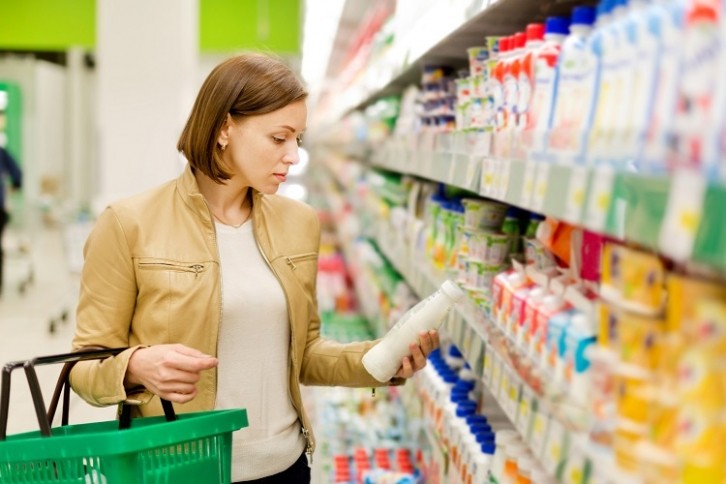How to effectively label your food product

As part of FoodNavigator's how-to guide for start-up success, we look at how to legally and effectively label new food products.
So, you’ve created your product. Dedicated time and enthusiasm to develop it, asked friends and family to taste-test it, and made any necessary changes to make sure it’s exactly how you want it to be. Now, it’s time to package it.
Obviously there are the design and material questions to be answered. Do you go for natural or synthetic packaging? Should the colour pallet be bright and bold or neutral and calm? And what tone should you strike with the name and tagline? These are all important questions and ones you’ve probably been mulling over since you had the idea for your very first product.
What you might not have considered is the importance of the information included on your product labelling. But, make no mistake, this is one of the most fundamental aspects to consider, and to get right, particularly when it directly relates to consumer safety.
“If you’re a brand and you’re putting a product on the market, you have an obligation to keep the consumer safe,” said Sam Hyde-Hart, founder of food and beverage consultancy firm, Hyde-Hart Consulting, at the FMCG start-up Bread & Jam event in London.
But the good news is the regulations across Europe are largely the same and so if your product is correct in one European country, then it’s likely correct in others. However, this does not negate the need for due diligence. It is your responsibility to guarantee the information on your packaging is comprehensive and correct. So, what are the essentials?
What information must be included on a product label?
The food product must be accurately described on the packaging, with any additional instructions included. This will ensure the consumer knows exactly what they’re buying. This includes a full list of ingredients, with any known allergens, such as milk or nuts, highlighted so allergic consumers can see if a product does or does not contain a particular allergen.

“If you have an incorrect label – incorrectly declaring allergens, incorrectly declaring ingredients, incorrectly declaring nutritional values – your product could put consumers at risk. And that could result in a recall. That’s where a product is taken off the market and could result in national news exposure,” says Hyde-Hart.
Not only would this pose an issue to public health, but it could also seriously damage your brand, and that damage would be difficult for a new brand to recover from. Moreover, if there is proven to be a major threat to public health then the consequences could be far more damaging.
“If you do make a mistake on your packaging and you’re challenged on it by the regulator, the chances are that they will ask you to change it at the next print run, if it is not a safety issue,” explains Hyde-Hart. “If there is proven to be negligence, you may be forced to withdraw the product from the market, you may be fined, and if you caused harm or in the worst-case injury or death, then you may well be prosecuted.”
In short, it matters to get it right.
The known allergens
It is essential to label, in bold on a product's ingredient list, the 14 known allergens in a food or drink product. The known allergens include:
- Celery
- Cereals containing gluten
- Crustaceans
- Eggs
- Fish
- Lupin
- Milk
- Molluscs
- Mustard
- Peanuts
- Sesame
- Soybeans
- Sulphur dioxide and sulphites
- Tree nuts
The label must also include a 'best before' or 'use by' date. These are important for both the consumer and the retailer. Which of these you include will depend upon the type of product.
According to the UK’s Food Standards Agency, “a use-by date on food is about safety and therefore a consumer must never eat food after the use-by date."
The best before date, sometimes shown as BBE (best before end), is about quality and not safety. After the best before date listed on a product, the food is still deemed safe to eat, but may not be at its best. Best before dates appear on a wide range of foods including dried foods such as pasta and rice and tinned foods such as baked beans.

Any necessary health warnings, such as ‘not suitable for pregnant women’, must also be clearly detailed. This information can be placed on the pack-of-pack label, alongside the ingredients list. This will allow the consumer to quickly identify if a product is suitable for them.
It’s also important and useful to detail how the product should be stored. For example, does it need to be frozen or refrigerated once opened.
The net quantity information is essential. Retailers will want to know the quantities they’re selling, and will list this on shelf labels, and customers will want to know the quantity they’re buying.
And last, but by no means least, declare the country of origin. If a product is made in Italy, then your customers will want to know. This detail has the added benefit of adding authenticity to your brand and can be used as part of your marketing.
What information must appear on food product labels?
- The name of the food
- A full list of ingredients with any allergens highlighted
- A 'best before' or 'use by' date
- Any necessary warnings
- Any special storage information
- Net quantity information
- The country or place of origin
Finally, even when you’ve made sure you’ve followed all of the rules, dotted all the i’s and crossed all the t’s, you should still get your labelling approved by experts in the country you intend to sell your product. This will ensure you are complying with the necessary regulations and can confidently launch your product onto the market.




















